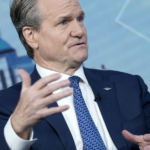Intel reported Q3 2025 revenue of $13.7 billion, up about 3% year-over-year, and non-GAAP earnings per share of $0.23, both ahead of analyst expectations. The company guided Q4 2025 revenue between $12.8 billion and $13.8 billion, roughly in line with consensus estimates.
Nvidia pioneered the transformation of GPUs, originally designed for gaming, into the workhorses of modern AI systems, securing a dominant position in the field.
During the earnings call Q&A, Zinsner was asked how the new inflows from the U.S. government, Nvidia, and SoftBank would affect Intel’s capital expenditures and investment strategy. He pointed to the influence of his strategic partner—the CEO.
“As we think about this cash, our first focus is to delever,” he said. “When Lip-Bu came in, he really was upset about the balance sheet. So we’ve done a lot to work on that and improved that for him.”
Intel took $4.3 billion of debt off the books this quarter, and plans to repay upcoming maturities later this year and next, he said. The company now has more flexibility in its capital spending but intends to remain disciplined, he added.
“We will absolutely be looking at demand,” Zinsner said. “Lip-Bu’s been very direct with us on this.” Tan wants to “see the whites of the eyes of the customer” before investing aggressively, Zinsner added. If that demand exists, Intel will ramp up CapEx as necessary, he said.









